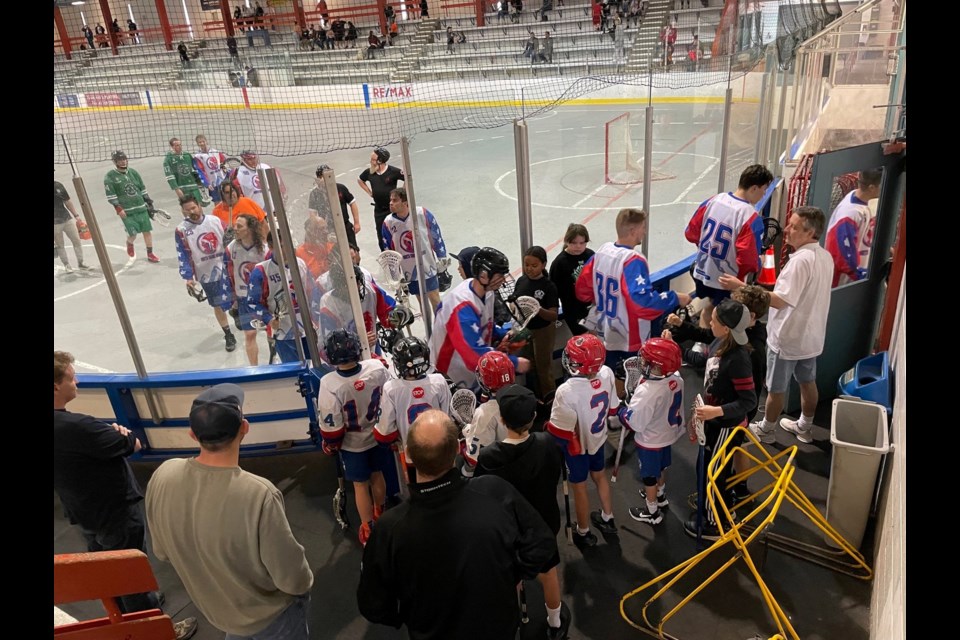They call it the Creator’s game.
When members of the North Shore Indians Lacrosse Club come together for tournaments and competitions, the resulting communal gathering is considered a sacred activity, as it brings together teams and families and nations and gives them a common activity to unite them.
The team includes players from Squamish.
Lacrosse is sometimes called the Medicine Game as well, because of the many physical and psychological benefits the players receive from giving it their all on the field.
So for them, it’s not really just a sport — it’s a multigenerational tradition that connects them with the Great Spirit, and with each other.
For Wilson Williams, the president of the non-profit society that runs the club, the work he does to provide lacrosse opportunities for Indigenous athletes is the continuation of the work done over a century ago by his great grandfather Andy Paull (Te Qoitechetahl or Xwechtáa) — the first person to bring sports programming to Sḵwx̱wú7mesh Úxwumixw (Squamish Nation) back in 1906, which led to the creation of the team in the 1930s. In Williams’ experience, many people haven’t heard about the rich legacy lacrosse has developed throughout Indigenous history, including their 1936 team that made the BC Sports Hall of Fame.
He hopes to change that.
“We’re really trying through the spirit of reconciliation in Canada to educate people on the history of lacrosse, the Creator’s game, which has a very powerful and deep connection with Indigenous communities but we also want to share it with everyone,” Williams said.
“Lacrosse is meant to empower you and bring people together as one. I believe in the power of sport, and more importantly the power of lacrosse. It can help the community in all facets. I can speak on behalf of our board and the lacrosse club that the North Shore Indians are here to stay, and we plan to make our community a better place and make a difference to the future of our community by teaching our players how to become better people.”
Williams is a long-time lacrosse athlete and an elected official of the Nation. When he retired, he knew right away that he wanted to give the next generation the same opportunities and experiences he had. The club went through a revitalization process shortly before the pandemic hit, and he introduced a new leadership structure. He assembled a board to oversee administration. And though they were impacted like other sport clubs, the club has recently seen a significant influx in participation numbers. Last summer they hosted an eight-game series that attracted over 500 spectators.
Currently, the senior team is in second place in the league, with four or five nationally ranked players. Their junior team initially looked like it might end up on the chopping block this year, but now has 25 members. Meanwhile, there’s a midget team that’s heading to provincials soon. One of the goals on the horizon is the national championships, which they won in 2001. Williams believes they have a good chance of taking the title again.
“If we look at how lacrosse brought our communities together, it wasn’t just the Squamish Nation. We also created a relationship with the Six Nations [in Ontario] and invited them to come and play during the summer. For some of them, Squamish ended up becoming their permanent residence and we call it a family, the relationships we created,” he said.
“That’s the whole vision. This is a very timely opportunity for us to revitalize lacrosse. We want to be role models. It’s a whole inspiration chain down from us to children and youth. Lacrosse is medicine and provides the life skills and discipline we’ve been missing for years, and this is the reason we do all of this.”



